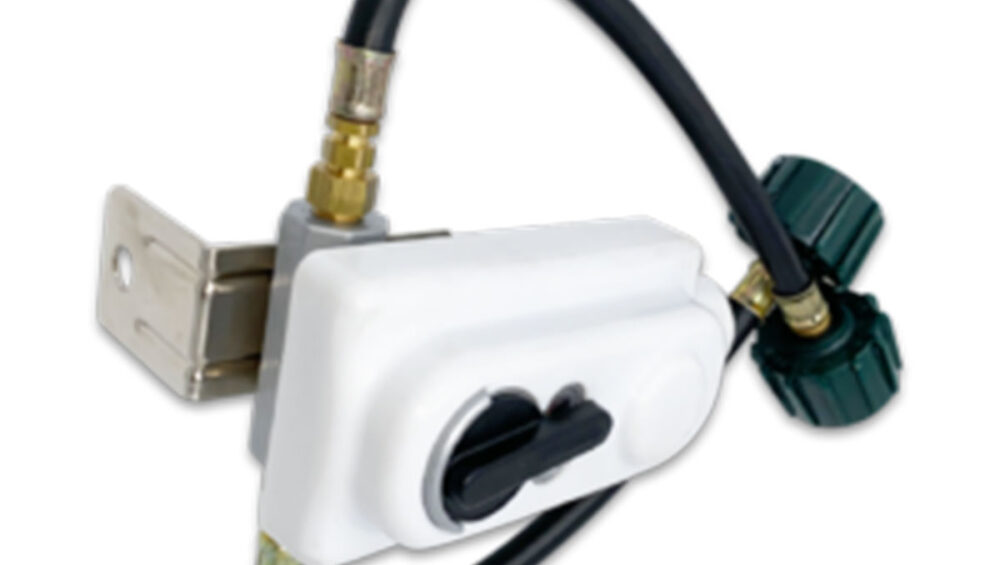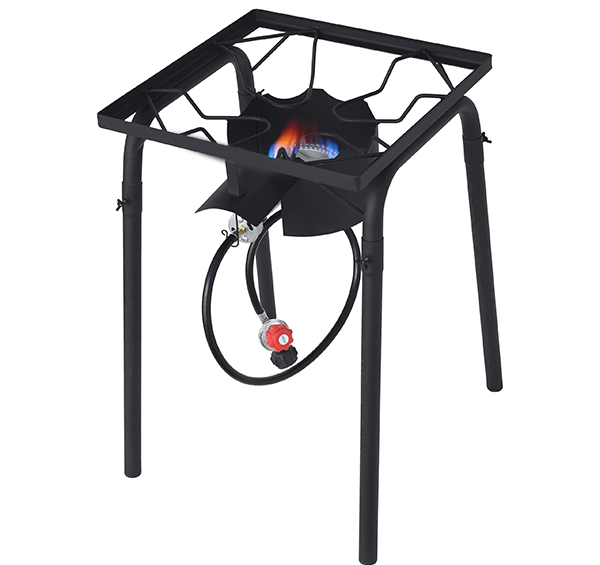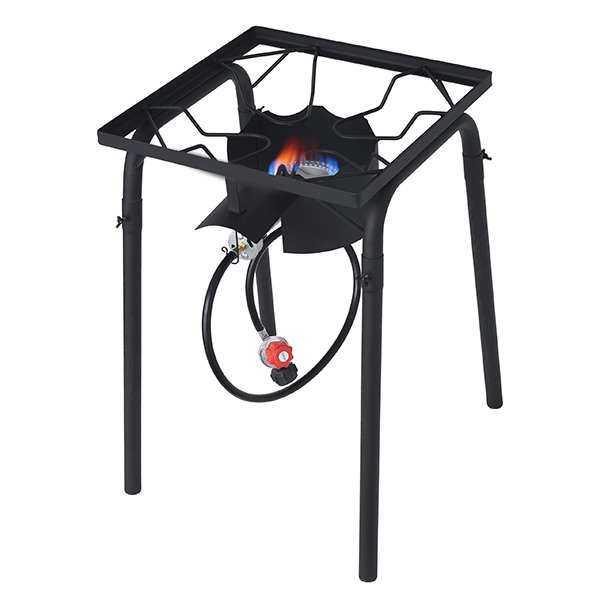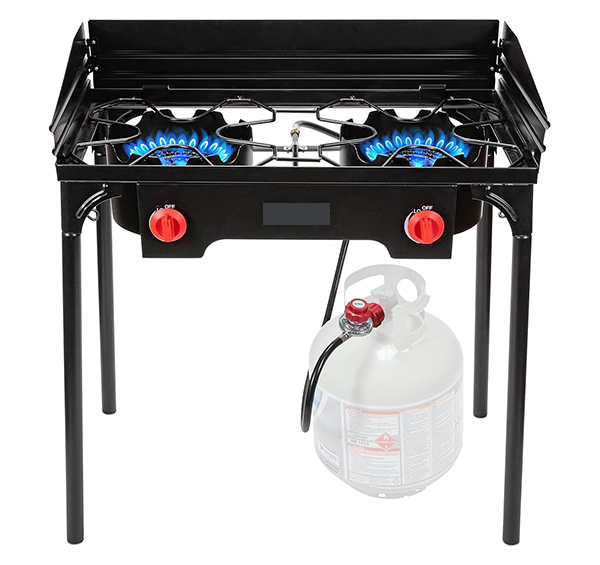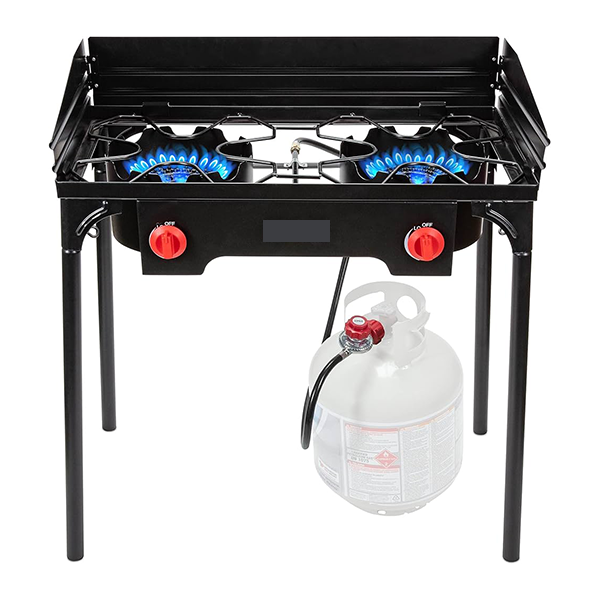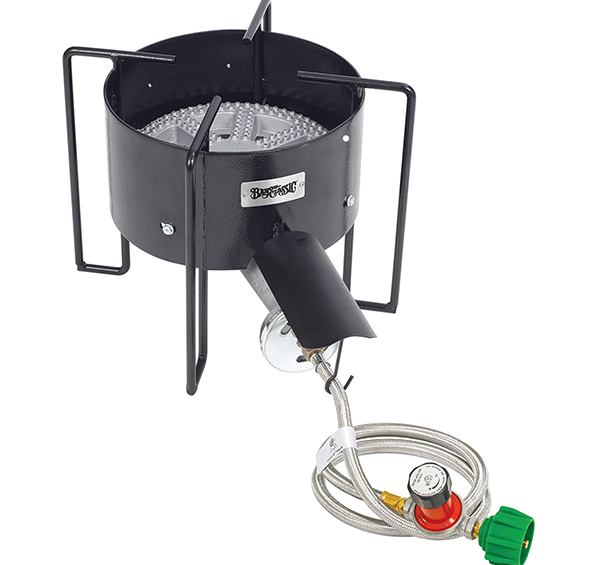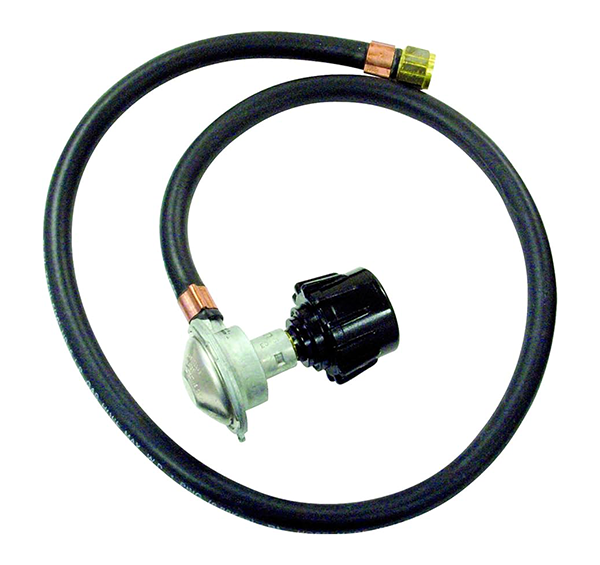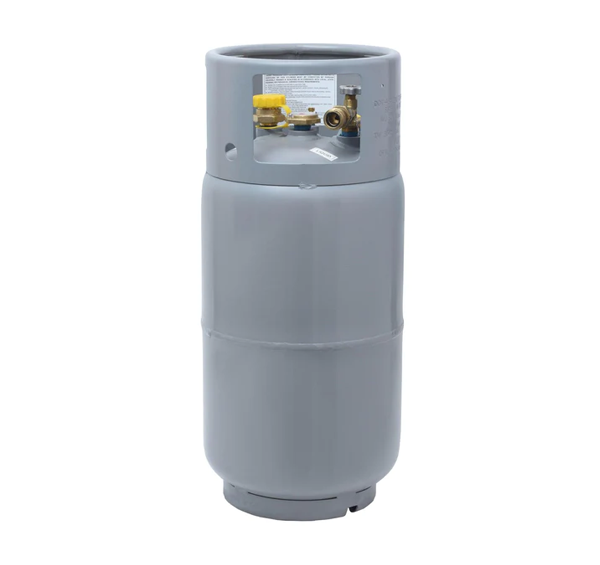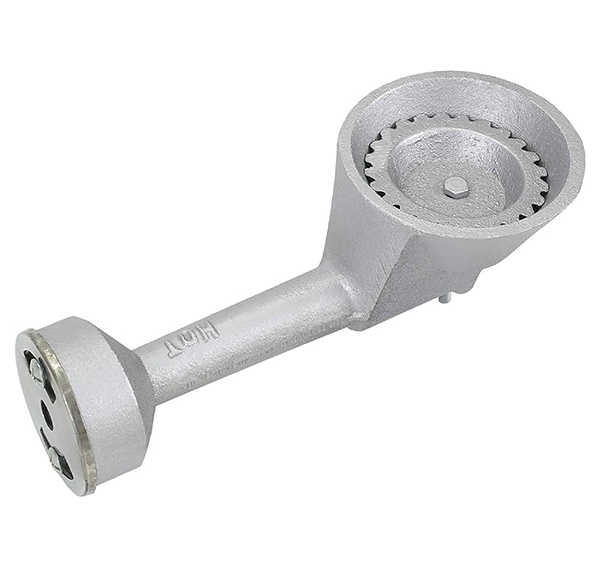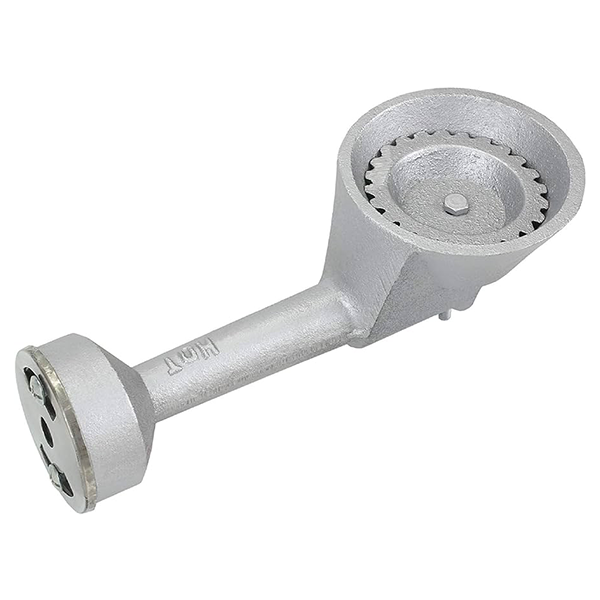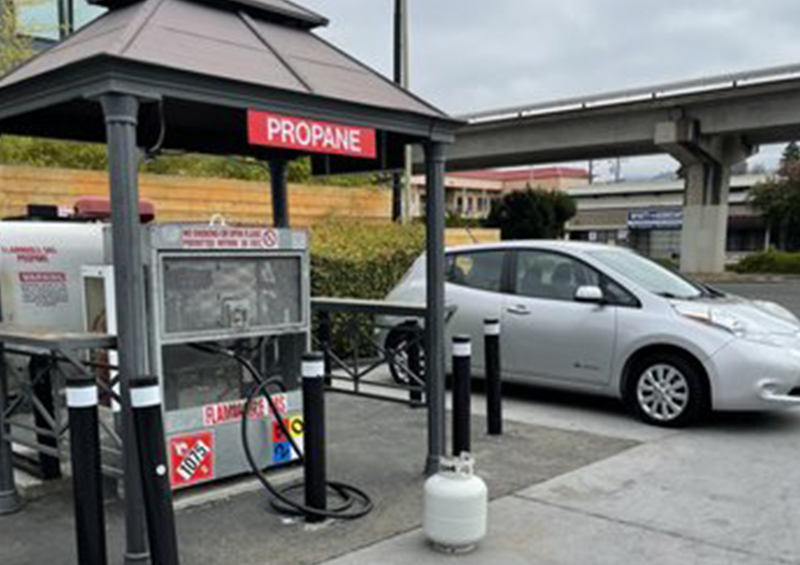Do you use propane-powered appliances at home? If so, you are likely aware of the vital role that propane regulators play in ensuring the safe and efficient operation of propane-powered systems. When you are using propane for heating, cooking, or any other equipment, understanding how regulators work is essential for maintaining optimal performance and safety standards.
What is a Propane Regulator?
A propane regulator is a device that controls the flow of propane gas from a storage tank to the appliance it powers. It has two main functions which are reducing the high pressure of propane in the tank and maintaining a consistent flow of gas to the appliance. Without the propane regulator, the propane gas is not safe to use.
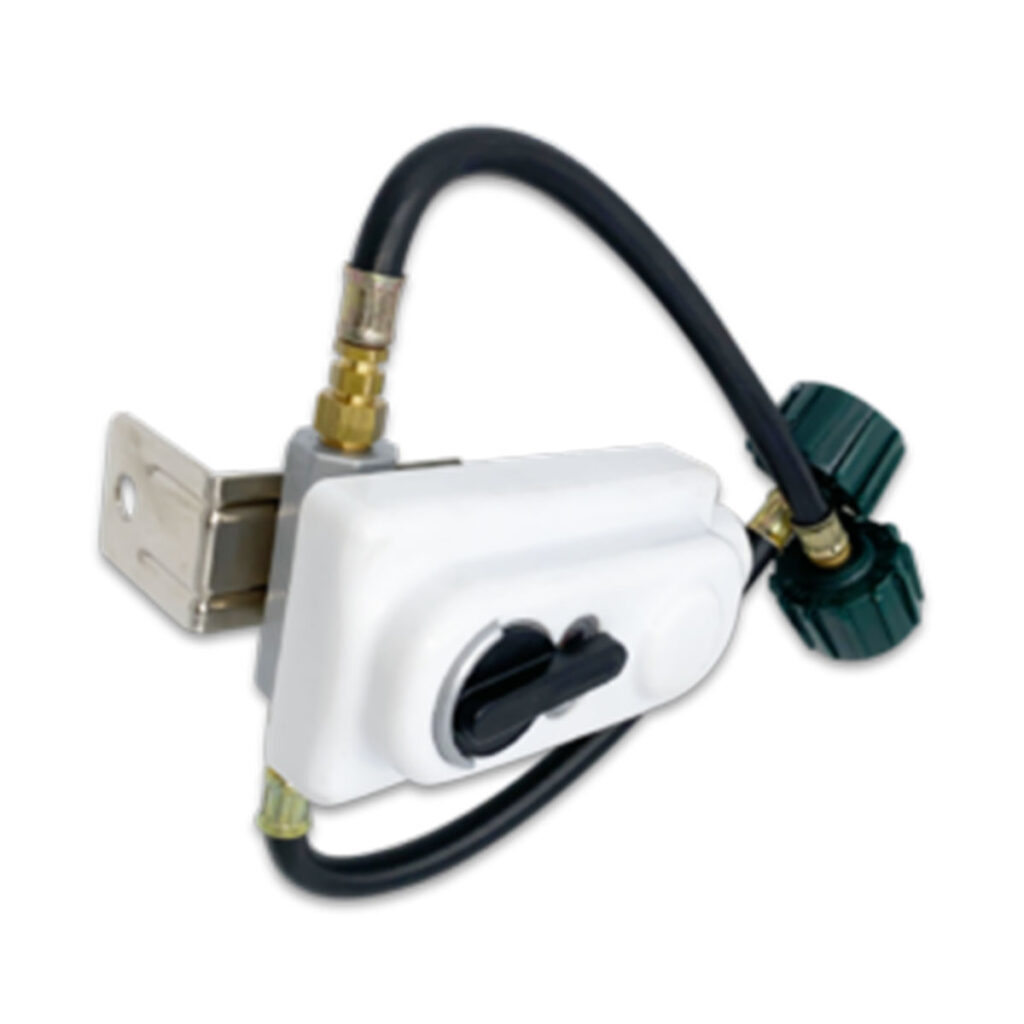 Components of a Propane Regulator
Components of a Propane RegulatorThese basic parts make up the propane regulator. A typical propane regulator consists of multiple components, including:
- Inlet connection
- Diaphragm
- Adjustment Knob
- Outlet Connection
- Inlet Connection
The inlet connection is where the regulator attaches to the propane tank. It is designed in a way to create a tight seal to stop the propane gas from leaking.
- Diaphragm
There is a mechanism inside the regulator that helps reduce the high pressure of gas. The mechanism is often called a diaphragm or piston, which changes the pressure of the propane gas to a safe level suitable for the appliance.
- Adjustment Knob
Some regulators have adjustment knobs that allow users to regulate the pressure output if needed. However, this is usually pre-set by the manufacturer and should not be adjusted without proper knowledge.
- Outlet Connection
This is where the regulated propane gas exits the regulator and travels through a hose or piping to the appliance.
How Do Propane Regulators Work?
- Pressure Regulation
When the propane tank valve is opened, high-pressure propane gas flows into the regulator through the inlet connection. The pressure-reducing mechanism inside the regulator then lowers the pressure to a safe level, typically around 10-12 psi for most residential applications. This regulated pressure is maintained as long as the tank valve remains open.
- Flow Control
In addition to reducing pressure, the regulator also controls the propane gas flow rate to the appliance. The gas flow is regulated through internal components like the size of the orifice or the movement of the diaphragm. The goal is to deliver a steady and consistent flow of gas to the appliance, ensuring proper combustion and smooth functioning.
- Safety Features
Propane regulators come with safety features to prevent over-pressurization or leaks. If there is a rapid increase in pressure downstream, the regulator may include a relief valve that opens to release excess pressure. This reduces the risk of damage to the system.
- Temperature Compensation
Some regulators are designed with temperature compensation systems. As propane gas is widely used in outdoor activities, the pressure of the gas can fluctuate. These regulators adjust the pressure output according to the requirement, so a constant flow is maintained.
Conclusion
Propane regulators are vital components of propane systems, providing safe and reliable pressure regulation and flow control for various applications. Understanding how regulators work is important to ensure proper installation and maintenance. Always consult qualified technicians for any installation or maintenance issues related to propane regulators to ensure optimal functionality and safety.
Do you use propane-powered appliances at home? If so, you are likely aware of the vital role that propane regulators play in ensuring the safe and efficient operation of propane-powered systems. When you are using propane for heating, cooking, or any other equipment, understanding how regulators work is essential for maintaining optimal performance and safety standards.
What is a Propane Regulator?
A propane regulator is a device that controls the flow of propane gas from a storage tank to the appliance it powers. It has two main functions which are reducing the high pressure of propane in the tank and maintaining a consistent flow of gas to the appliance. Without the propane regulator, the propane gas is not safe to use.
 Components of a Propane Regulator
Components of a Propane RegulatorThese basic parts make up the propane regulator. A typical propane regulator consists of multiple components, including:
- Inlet connection
- Diaphragm
- Adjustment Knob
- Outlet Connection
- Inlet Connection
The inlet connection is where the regulator attaches to the propane tank. It is designed in a way to create a tight seal to stop the propane gas from leaking.
- Diaphragm
There is a mechanism inside the regulator that helps reduce the high pressure of gas. The mechanism is often called a diaphragm or piston, which changes the pressure of the propane gas to a safe level suitable for the appliance.
- Adjustment Knob
Some regulators have adjustment knobs that allow users to regulate the pressure output if needed. However, this is usually pre-set by the manufacturer and should not be adjusted without proper knowledge.
- Outlet Connection
This is where the regulated propane gas exits the regulator and travels through a hose or piping to the appliance.
How Do Propane Regulators Work?
- Pressure Regulation
When the propane tank valve is opened, high-pressure propane gas flows into the regulator through the inlet connection. The pressure-reducing mechanism inside the regulator then lowers the pressure to a safe level, typically around 10-12 psi for most residential applications. This regulated pressure is maintained as long as the tank valve remains open.
- Flow Control
In addition to reducing pressure, the regulator also controls the propane gas flow rate to the appliance. The gas flow is regulated through internal components like the size of the orifice or the movement of the diaphragm. The goal is to deliver a steady and consistent flow of gas to the appliance, ensuring proper combustion and smooth functioning.
- Safety Features
Propane regulators come with safety features to prevent over-pressurization or leaks. If there is a rapid increase in pressure downstream, the regulator may include a relief valve that opens to release excess pressure. This reduces the risk of damage to the system.
- Temperature Compensation
Some regulators are designed with temperature compensation systems. As propane gas is widely used in outdoor activities, the pressure of the gas can fluctuate. These regulators adjust the pressure output according to the requirement, so a constant flow is maintained.
Conclusion
Propane regulators are vital components of propane systems, providing safe and reliable pressure regulation and flow control for various applications. Understanding how regulators work is important to ensure proper installation and maintenance. Always consult qualified technicians for any installation or maintenance issues related to propane regulators to ensure optimal functionality and safety.

